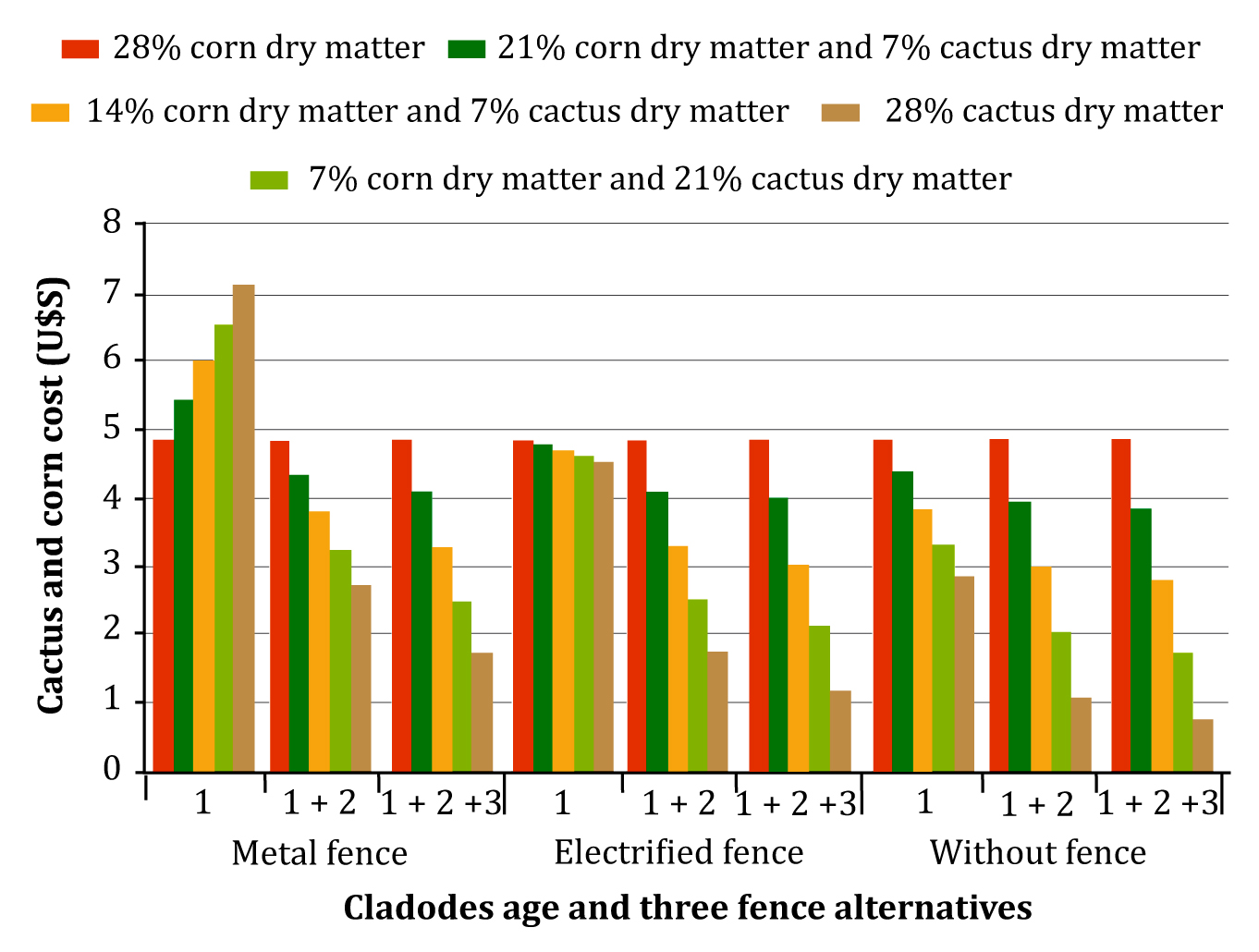Cacti (Opuntia sps.) as forage in Argentina dry lands
Keywords:
Opuntia sps., forage productivity, nutrient content, cold hardiness, economic feasibility, dry lands, ArgentinaAbstract
Studies on cactus carried out mainly in Mendoza plain, Argentina, and in other country areas were reported. Variations in nutrient contents with three cladode age classes were examined for seven Opuntia forage clones. For all age classes combined, clones showed high organic matter: 84.4%, in vitro organic matter digestibility: 78.9% and low crude protein (CP) content: 4.0%. High doses of fertilizer almost doubled the mean CP content of the cladodes from O. ficus-indica (L.) Mill. x O. lindheimerii Engelm. cross when it was compared with the treatment in which no fertilizer was added (7.8 and 4.3%, respectively). The response to fertilization at the highest application rate was near 4-fold increase over the biomass of the zero fertilization treatment, 3.2 to 12.7 kg DM plant-1. Of this cross, clone 42 produced a dry matter (DM) biomass of 40 t DM ha-1 in 4 years with a total of 625 mm rainfall which is the greatest DM production recorded to date for such a low rainfall. O. spinulifera Salm-Dyck f. nacuniana Le Houér. appears to be the most promising species for forage production in areas with extremely cold winters. Clones 46, 80, 83, 89 and 94 had zero frost damage. Economic analysis of Opuntia plantations and the use of cactus for replacing corn in small ruminant diet were included. The cost-benefit relationship of using pre-emergent herbicides on biomass production and fertilizer application on biomass production and protein levels were analyzed. The cactus/corn cost relationship indicated the possibility of replacing corn by cactus in small ruminant diet.
Downloads

Downloads
Published
How to Cite
Issue
Section
License
Aquellos autores/as que tengan publicaciones con esta revista, aceptan las Políticas Editoriales.










.jpg)




